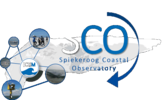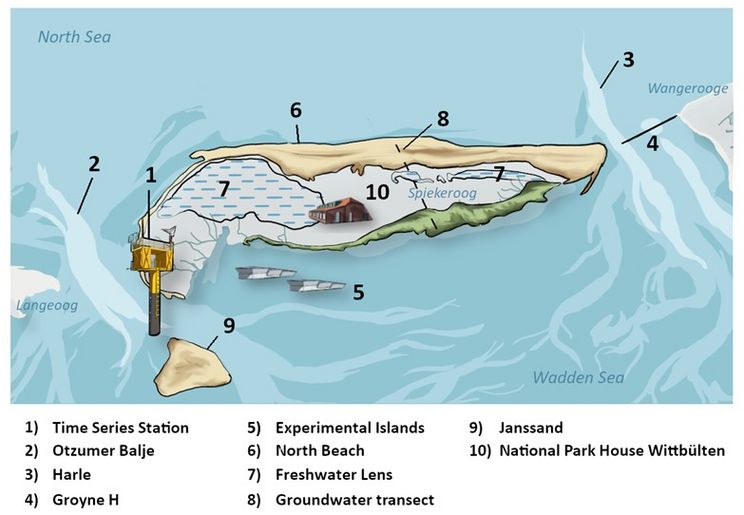Contact
Spiekeroog Coastal Observatory (SCO)
Visitors' address
Spiekeroog Coastal Observatory (SCO)
The integrated Spiekeroog Coastal Observatory (SCO) is oriented towards interdisciplinary marine and terrestrial ecosystem research, also containing subsurface investigations. Coastal observatories are key to improve the understanding of processes within the coastal area as well as their interactions with regional and global environmental changes. Amid the Wadden Sea UNESCO world natural heritage site - the largest tidal flat region worldwide - the back-barrier island Spiekeroog represents an exclusive site for a coastal observatory focusing on land-sea interactions. The land-sea transition zone is an essential area since it addresses unique scientific questions under anthropogenic and natural influences. This establishes the SCO as a unique coastal observatory, which is further enhanced by its position within the tidal area and the multiple research-field characteristics. Its potential to identify patterns in long-term variability and simultaneously to understand short-term changes generates the SCO as a remarkable central infrastructure.
The establishment of the Time-Series Station (TSS) Spiekeroog in a tidal channel west of Spiekeroog back in 2002 created the basis of the SCO. Since then, the SCO is expanding continuously and is now representing a valuable opportunity benefiting the fields of education, industry, government, and environmental conservation. Summing up the infrastructure, elements, and technical components, the importance of the SCO is evident. Implementing individual projects without the collaboration and base elements of the SCO would be deemed impossible.
Harmonizing and tossing all aspects and competences of the Spiekeroog Coastal Observatory will be a next step to consolidating the SCO. Supporting the SCO, based on projects is biased towards building up new facilities, not maintaining, refurbishing or deconstructing them. Therefore, institutional support and funding opportunities not linked to projects but aiming to sustain observational capacities are required.
In 2010 the SCO became a part of the COSYNA network and was officially registered in 2018 as one site of the German long-term environmental research network (LTER-D).
The Spiekeroog Coastal Observatory (SCO) represents a combination of long-term (ecology) exploration sites (1, 5, 7) as well as campaign-based research sites (6, 9).
(1) The Time-Series Station Spiekeroog is continuously recording oceanographic, meteorological, and biogeochemical data since 2002. (5) Experimental islands and salt-marsh enclosed sites were established in 2014 exploring interactions of plants and animals within a metacommunity framework. Abiotic and biotic data is observed since the set-up. (6) The North beach as well as the (9) Janssand sand bank serve as campaign-based research sites since 2014 and respectively 2002. (8) A long-term groundwater monitoring transect was installed in north-south direction at the western part of the Ostplate in 2016 investigating the simultaneous evolution of dunes and accompanying (7) freshwater lenses. (10) A modern research center was established in 2011 on Spiekeroog providing laboratory and training rooms as well accommodations for scientists.
The Gute Küste Niedersachsen project is a good example, successfully using many different components of the SCO. It combines research at different sites around and on the island and focusses mainly on the tidal inlets Otzumer Balje (2) and Harle (3), the latter containing a large groyne (4) for coastal protection.


